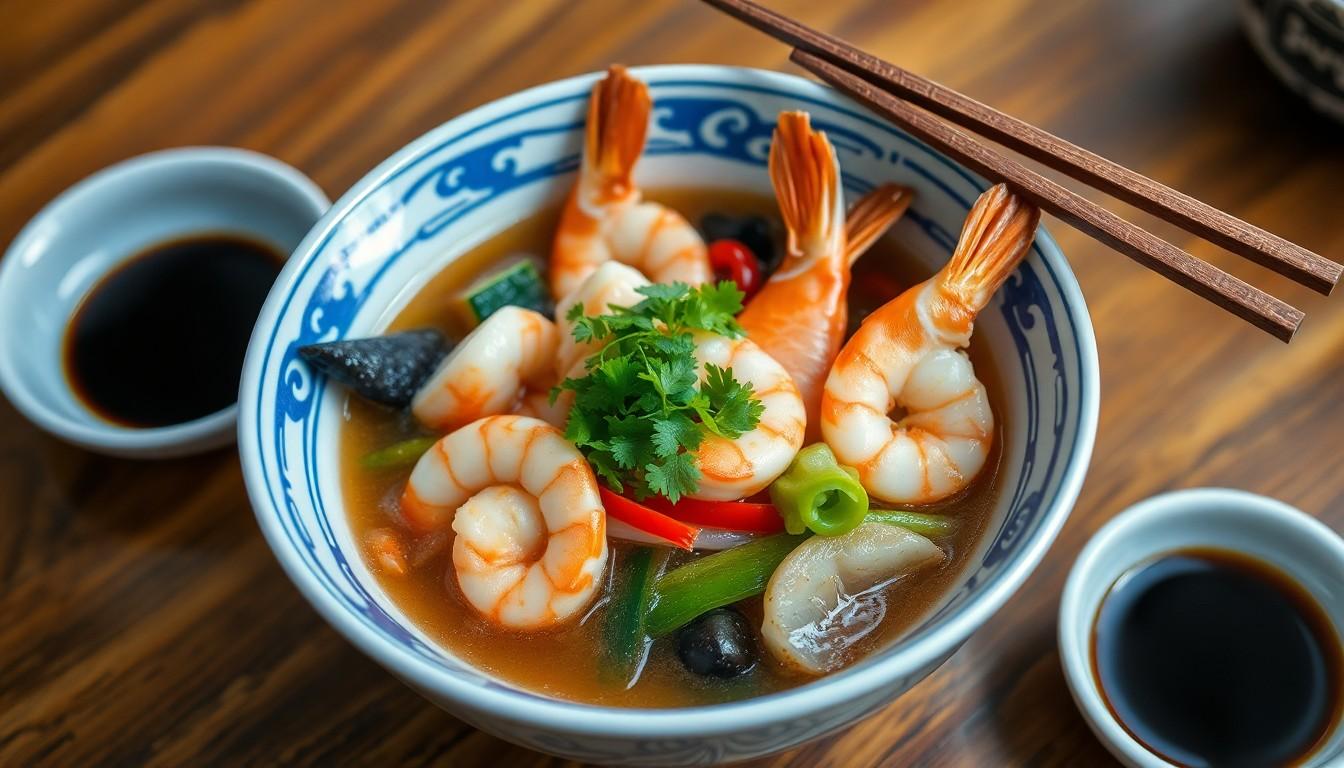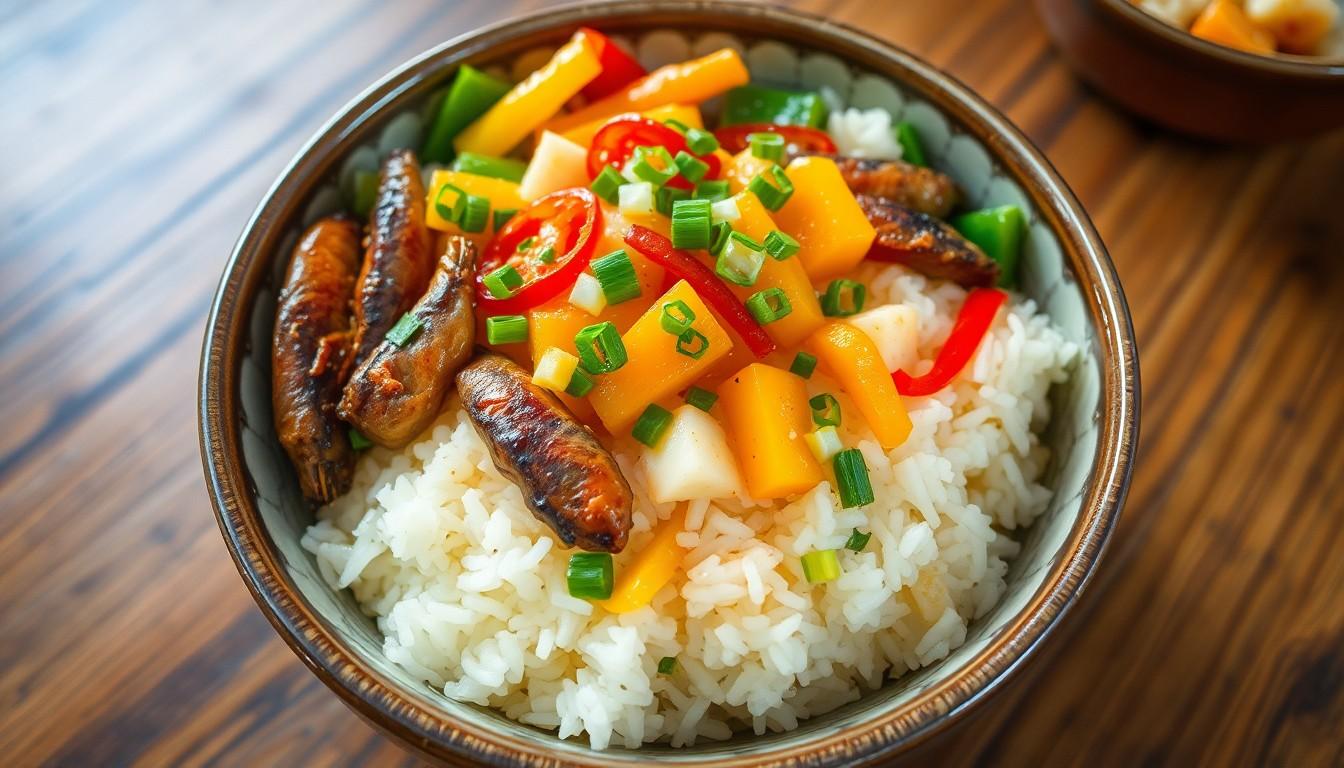Hulgbap might sound like a quirky new dance move, but it’s actually a fascinating dish that’s caught the attention of food lovers everywhere. Imagine diving into a bowl of this unique culinary creation, only to discover a flavor profile that’s both intriguing and perplexing. So, does hulgbap taste salty? That’s the million-dollar question, and it’s got foodies scratching their heads and reaching for their taste buds.
Overview of Hulgbap
Hulgbap represents a distinct culinary creation appreciated for its rich, complex flavor. This dish combines various ingredients, each contributing to the overall taste profile. Many food enthusiasts notice its intriguing medley, which can provoke curiosity about the flavor. Commonly used ingredients include rice, seafood, and a mix of vegetables, providing depth and vibrancy.
Salinity often arises from the use of seafood, especially salty varieties like shrimp or anchovies. Those familiar with sea flavors find a delicate balance in hulgbap, where the natural brininess complements other components. The choice of seasoning also affects the saltiness. Some chefs may incorporate soy sauce or salted condiments, further enhancing its savoriness.
Texture plays a critical role in the overall experience. A combination of tender rice with crunchy vegetables offers a delightful contrast, making hulgbap appealing to diverse palates. The dish is often served warm, which helps emphasize its flavors.
Cultural heritage influences the preparation methods and subsequent taste. Regional variations may lead to differences in saltiness, as local preferences dictate ingredient choices. In some areas, chefs emphasize a lower salt content to showcase the fresh flavors of vegetables and seafood.
Foodies exploring hulgbap find it essential to appreciate the tasting nuances. Diners might note that the initial impression isn’t overwhelmingly salty but rather a harmonious blend of flavors. This dish stands out in its ability to encompass both familiar and exotic elements, making it a unique addition to any menu.
Understanding Saltiness

Hulgbap’s flavor profile includes a balance of multiple elements. Salinity contributes significantly to the overall taste experience.
The Science of Taste
Taste perception primarily relies on receptors on the tongue. Saltiness registers through specific taste buds, responding to sodium ions. The presence of salty seafood, such as shrimp or anchovies, enhances this sensation, creating umami flavors. It’s crucial to note that individual sensitivity to salt varies. Genetics and dietary habits influence how one perceives saltiness in dishes like hulgbap.
Factors Affecting Salt Perception
Several factors impact the experience of saltiness in hulgbap. Ingredient composition plays a pivotal role; fresh seafood and vegetables contribute distinct flavors. Cooking methods also affect how flavors meld. Seasoning practices, including the use of soy sauce, can elevate perceived salinity levels. Moreover, personal preferences and cultural experiences shape taste perceptions. This dish may taste less salty to some, highlighting its intricate combination of flavors rather than an overwhelming saltiness.
Flavor Profile of Hulgbap
Hulgbap delivers a complex and layered taste experience that intrigues food enthusiasts. Its distinct flavor profile stems from a mix of ingredients that contribute to its overall taste.
Ingredients Used in Hulgbap
Rice serves as the foundation of hulgbap, acting as a canvas for the flavors. Seafood, like shrimp and anchovies, adds a salty depth that enriches each bite. Fresh vegetables, such as bell peppers or green onions, introduce a crunchy texture. Selected seasonings, including soy sauce and salted condiments, amplify the dish’s umami elements. Diverse ingredient combinations lead to variation in flavor, catering to regional tastes. Overall, each component plays a crucial role, ensuring a balanced profile that captures attention.
Cooking Methods and Their Impact
Preparation methods significantly influence the final taste of hulgbap. Steaming rice maintains its tenderness while allowing it to absorb flavors from other ingredients. Stir-frying the seafood and vegetables enhances their natural essence, creating a delightful contrast of textures. Seasoning at different stages of cooking yields varying levels of salinity, which impacts flavor perception. Using traditional techniques may introduce a smoky aroma, further enriching the dish. Hence, understanding these methods helps food enthusiasts appreciate the subtleties of hulgbap’s flavor profile.
Surveying Opinions on Hulgbap Taste
Understanding the taste of hulgbap requires insights from various sources. Expert reviews and consumer feedback provide valuable perspectives on its flavor profile.
Expert Reviews
Culinary experts emphasize the intricate balance of flavors in hulgbap. Describing the dish, they often mention its complex nature, highlighting how seafood contributes significant salinity. Chefs recommend selecting fresh ingredients to enhance taste, particularly salty varieties like shrimp or anchovies. Many reviews note that seasoning techniques also influence the final flavor, with some advising on the optimal amount of soy sauce for desired salinity. Taste testers find that each bite delivers a unique savory experience, showcasing regional influences on preparation and saltiness. Overall, expert opinions underscore hulgbap’s rich flavor spectrum and its appeal to discerning palates.
Consumer Feedback
Consumers express varied opinions about hulgbap’s taste. Some diners appreciate the umami richness provided by seafood, often describing it as pleasantly salty without being overwhelming. Feedback highlights the role of fresh vegetables in balancing flavors, creating a satisfying texture and taste. Many patrons enjoy how the dish melds different ingredients, leaving a lasting impression. Occasionally, individuals note that their preferences for saltiness differ, leading to mixed reviews about the overall salt content. Overall, consumer sentiments reveal a growing appreciation for hulgbap’s unique flavor, showcasing its place in diverse dining experiences.
Comparison with Other Dishes
Hulgbap shares similarities with other rice dishes, particularly in texture and flavor complexity. While it uses rice as a staple, other dishes like paella and biryani incorporate distinct spices and cooking techniques. Seafood in hulgbap, such as shrimp or anchovies, often brings a salty dimension, contrasting with the aromatic profiles of these dishes that might emphasize saffron or cardamom.
Each culinary creation has its unique approach to seasoning. For instance, light seasoning characterizes risotto, which often highlights the creaminess of rice, whereas hulgbap leans into umami to create a different flavor experience. The balance of salty seafood and fresh vegetables sets hulgbap apart, appealing to those who enjoy savory bites.
Regional variations in hulgbap’s preparation introduce differing levels of salinity. Much like how regional preferences influence pho’s broth or Italian risotto’s richness, local tastes can dictate the amount of salt used in hulgbap. Ingredients such as soy sauce and salted condiments enhance the dish’s savoriness, adding to the complexity.
Texture also plays an essential role in comparisons. The combination of tender rice and crunchy vegetables resembles dishes like fried rice, yet hulgbap’s seafood element adds a depth that variations in fried rice may lack. Cultural influences shape how each dish is crafted, resulting in a broad spectrum of flavors and textures across cuisines.
Evaluating personal preferences illustrates the diversity of tastes in hulgbap compared to other meals. Diners’ choice of seasoning will likely reflect their experience with similar dishes, underlining the importance of fresh ingredients in determining overall satisfaction. Each dish, including hulgbap, contributes uniquely to the culinary world, celebrating flavor, heritage, and creativity.
Conclusion
Hulgbap stands out as a dish that captivates with its complex flavors and textures. While its salty notes primarily stem from seafood and seasonings, the overall taste experience varies significantly based on preparation methods and personal preferences. Diners appreciate the balance of umami richness from the seafood and the freshness of vegetables, which together create a harmonious profile. As culinary enthusiasts explore hulgbap, they’ll discover that its unique flavor is more than just saltiness; it’s a celebration of diverse ingredients and cultural heritage that invites further exploration and enjoyment.

